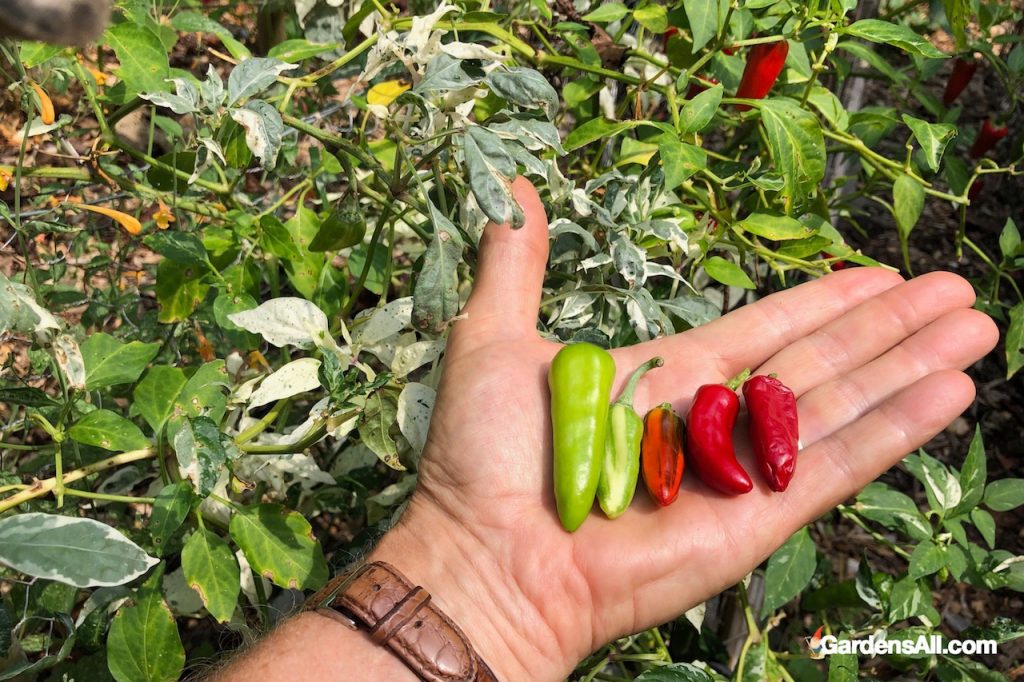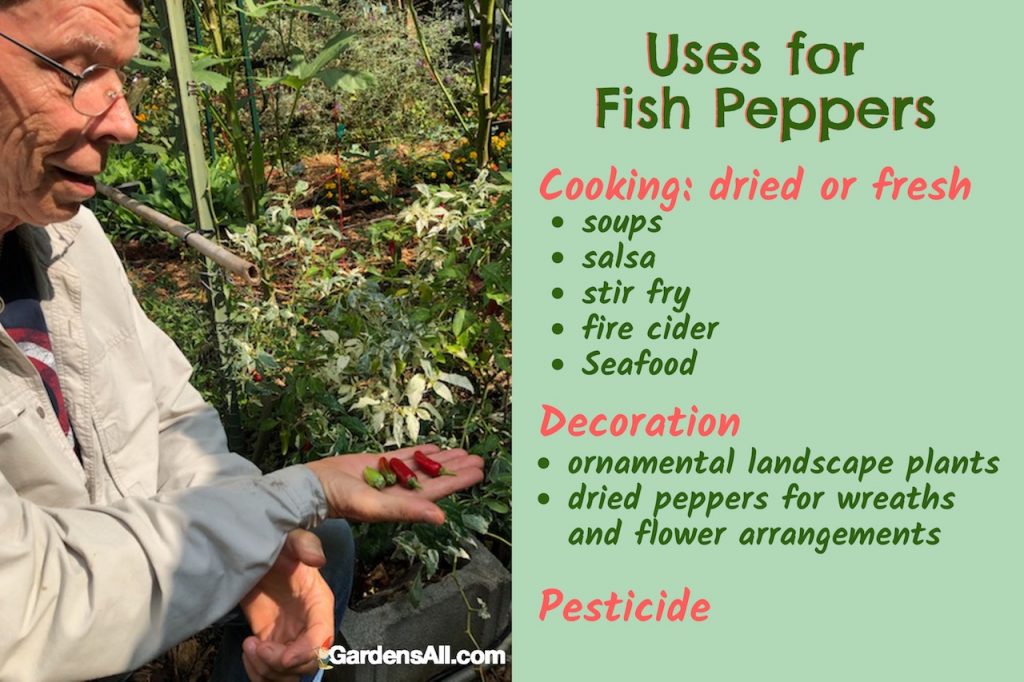A Pepper Plant to Love
The fish pepper plant is a beautiful and flavorful annual hot pepper plant that adds a lovely array of color and contrast to any yard or garden landscape.
A cultivar of Capsicum annuum, the feisty peppers have gone from popularity to obscurity and now, back to increasing cultivation as a culinary and an ornamental.

Why is it Called Fish Pepper?
The fish pepper has a unique history tied to its name. In the latter 1800’s, the spicy Caribbean pepper came to the Chesapeake Bay area and became a culinary favorite among the chefs of Baltimore and Philly. The lightest colored peppers were used to flavor seafood dishes and thus came to be called “fish peppers”.
As with many food fashions, the fish pepper’s popularity waned, and it gradually became less of a desired element in the local cuisine. It was quite by accident that this hot little capsicum survived as a species.
Saved from the Brink of Oblivion
It was only in 1995, that fish pepper seeds became available through Seed Savers, a consortium of folks dedicated to saving and exchanging heirloom varieties.
Multicolored, Multifaceted Beauty
One look at a mature fish pepper plant, and it’s easy to see why many gardeners find it so appealing. The green and white variegated leaves are quite attractive. The pods progress through colors ranging from white to green, to amber striped, to red and many colors in between.
The fish pepper plant grows to a tidy height and spread of about 2.5 feet, and can be planted alone or like a hedgerow. What’s not to love about this peppery garden peacock?
Are Fish Peppers Hot?
Well maybe a slight hiccup with regard to consumption: we’re wimpy on the picante side.
The fish pepper delivers a range of 5,000 and 30,000 Scoville heat units. That’s at minimum equal to a jalapeño, but it can also be up to 12 times hotter! As a “medium-hot” pepper it ranks among the Serrano types.
Our tastes range more on the mild side of hot these days, so we mostly growing this for its beauty and pest deterrent qualities and gift-ability. It’s always fun to share the fish pepper harvest with friends and family who are hardy heat-loving aficionados.
Homemade salsa from homegrown tomatoes, peppers and onions is the best! We love eating it warm from the pot, and that bag of tortilla chips is gone in no time!
Uh-oh… who ate all the chips?!? 🤔😉 😇
If you favor milder peppers, we love growing Marconi peppers.
Uses for Fish Peppers
- Cooking – dried or fresh
- soups
- salsa
- stir fry
- fire cider
- Seafood
- Decoration
- ornamental edible landscape plants
- dried peppers for wreaths and flower arrangements
- Pesticide – organic pest control

Pepper Spray for Natural Pesticide
Pepper solutions and hot sauces are well known as a beneficial organic pest control for repelling plant pests like the bad beetles. So even if you end up with more hot peppers than you can use, making a pesticide from them is a good use of excess, especially if you love the hot peppers more than they love you!
Fish Pepper – An Ornamental Annual Landscape Plant
We consider the fish pepper plant to be an “ornamental landscape annual” worthy of any garden or “yarden” landscape, including HOA friendly! We’d love to hear if you have experience or questions about growing fish peppers, just drop us a line.
Find more on foodscaping ideas and edible hedges here.
Wishing you great gardens and happy harvests!
G. Coleman Alderson is an entrepreneur, land manager, investor, gardener, and author of the novel, Mountain Whispers: Days Without Sun. Coleman holds an MS from Penn State where his thesis centered on horticulture, park planning, design, and maintenance. He’s a member of the Phi Kappa Phi Honor Society and a licensed building contractor for 27 years. “But nothing surpasses my 40 years of lessons from the field and garden. And in the garden, as in life, it’s always interesting because those lessons never end!” Coleman Alderson

